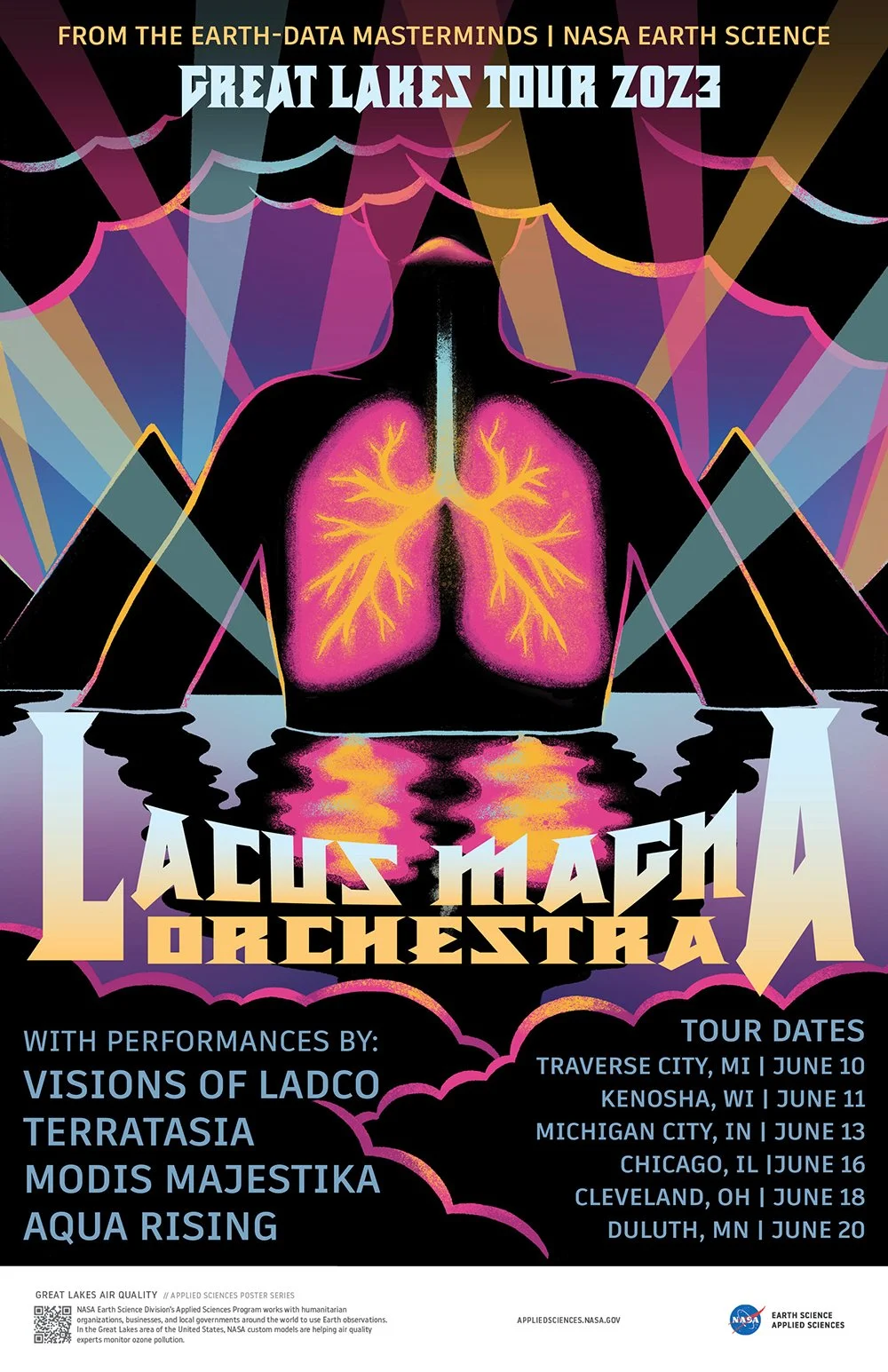NASA Earth Sciences: Illustrated Poster Design
Working with a team of talented strategists and copywriters, I created a series of illustrated posters for the "‘Home Planet Playlist’ — a series of theoretical music shows — that cleverly combined musical genres with NASA Earth Sciences projects, highlighting their wide range of applications.
These posters bring attention to the impact NASA science has on earth. They are available to download, print and share on NASA’s website.
Words by: Jessica Sheaves | Editor: Kaitlin Carpenter | Producer: Aimee Levesque
SERVIR
SERVIR is serving up glam in Guyana with its Mangrove Monitoring Service. This application helps communities track mangrove forest health in the face of coastline erosion and urban development. That way, they keep capturing carbon and absorbing water when mother nature is rockin’ coastal communities like a hurricane. Talk about some bodacious trees!
Sustainable Cashmere Project
You’ve heard of cool cats — now let us introduce you to the Gobi goats. Goat herders needed to keep a beat on the Gobi Desert’s rangelands to keep their goats healthy. NASA’s Sustainable Cashmere Project used satellite data to find how weather, climate, and grazing harmonize and created models that give herders the low down.
CYANOBACTERIA ASSESSMENT NETWORK (CYAN)
Turn on, tune in, and read up on CyAN. This far-out application works to keep nature lovers safe from harmful cyanobacteria in the water. Algal blooms are the wrong kind of flower power — they can make anyone who swims near them sick and even kill pets. NASA scientists use satellites to sound an early alarm on blooms as they emerge in over 2,000 of America’s grooviest lakes.
Great Lakes Air Quality
NASA Earth Science Division’s Applied Sciences Program works with humanitarian organizations, businesses, and local governments around the world to use Earth observations. In the Great Lakes area of the United States, NASA custom models are helping air quality experts monitor ozone pollution.
MARINE OIL SPILL THICKNESS (MOST)
Oil spills have a reputation for leaving a blank space in the ocean where nature can’t get clean. MOST lets fearless response crews see through the iridescent haze to spot the treacherous areas where the oil is thickest. This helps them prioritize cleanup efforts so nature can shake it off and stay beautiful.





